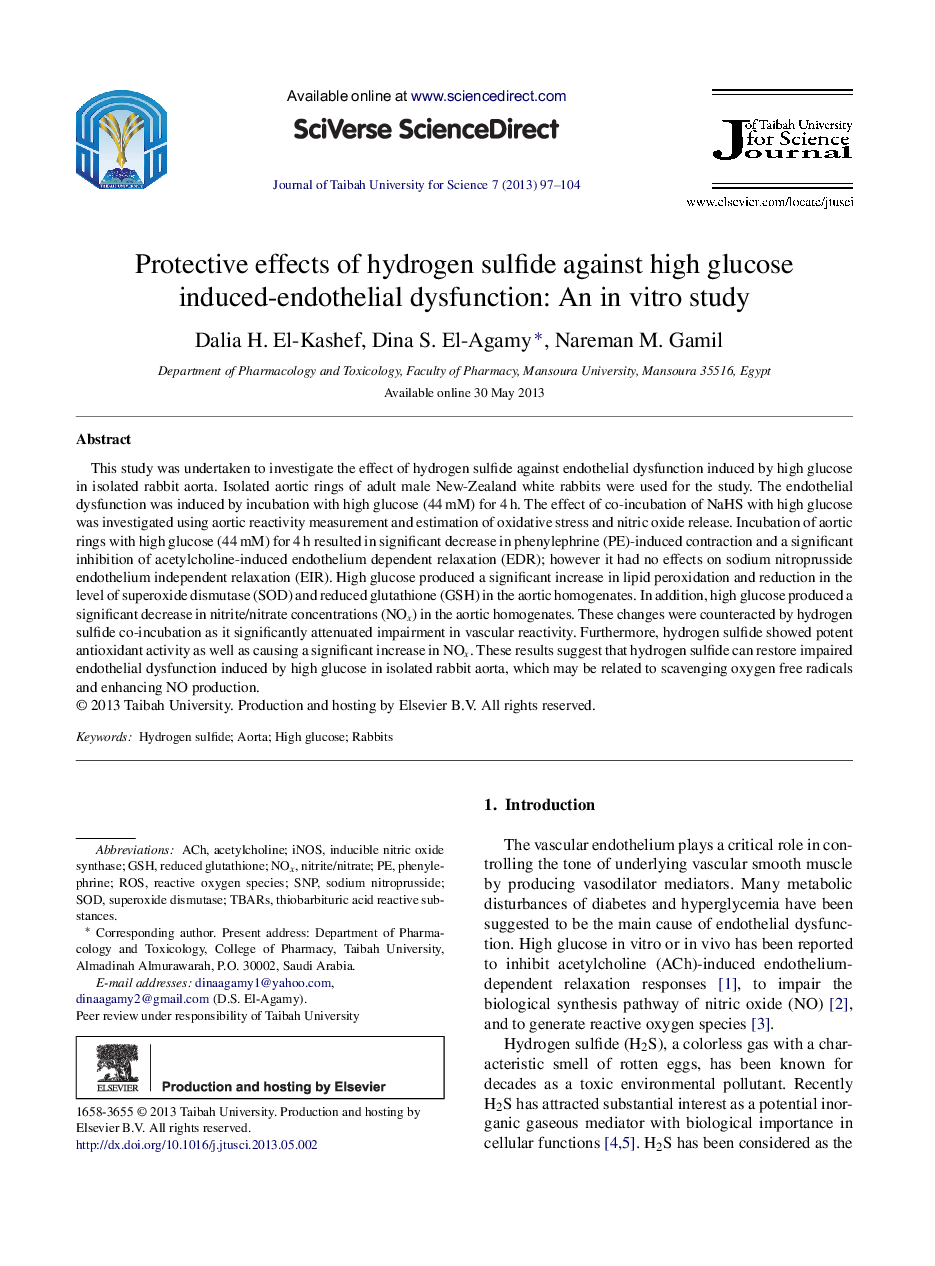| Article ID | Journal | Published Year | Pages | File Type |
|---|---|---|---|---|
| 1260378 | Journal of Taibah University for Science | 2013 | 8 Pages |
This study was undertaken to investigate the effect of hydrogen sulfide against endothelial dysfunction induced by high glucose in isolated rabbit aorta. Isolated aortic rings of adult male New-Zealand white rabbits were used for the study. The endothelial dysfunction was induced by incubation with high glucose (44 mM) for 4 h. The effect of co-incubation of NaHS with high glucose was investigated using aortic reactivity measurement and estimation of oxidative stress and nitric oxide release. Incubation of aortic rings with high glucose (44 mM) for 4 h resulted in significant decrease in phenylephrine (PE)-induced contraction and a significant inhibition of acetylcholine-induced endothelium dependent relaxation (EDR); however it had no effects on sodium nitroprusside endothelium independent relaxation (EIR). High glucose produced a significant increase in lipid peroxidation and reduction in the level of superoxide dismutase (SOD) and reduced glutathione (GSH) in the aortic homogenates. In addition, high glucose produced a significant decrease in nitrite/nitrate concentrations (NOx) in the aortic homogenates. These changes were counteracted by hydrogen sulfide co-incubation as it significantly attenuated impairment in vascular reactivity. Furthermore, hydrogen sulfide showed potent antioxidant activity as well as causing a significant increase in NOx. These results suggest that hydrogen sulfide can restore impaired endothelial dysfunction induced by high glucose in isolated rabbit aorta, which may be related to scavenging oxygen free radicals and enhancing NO production.
